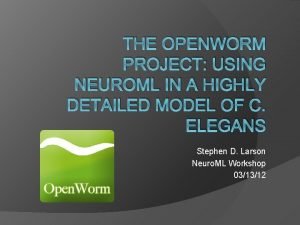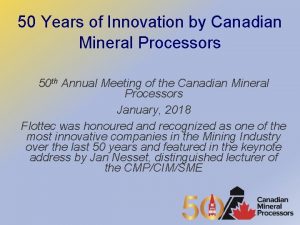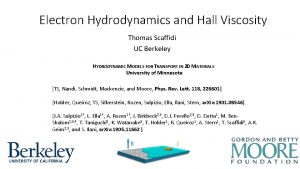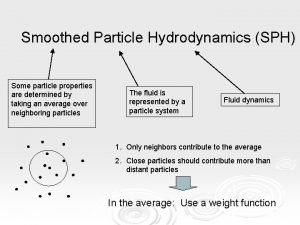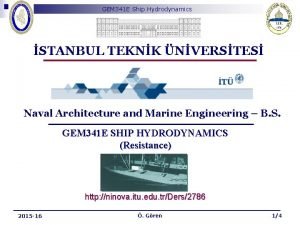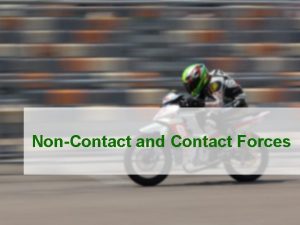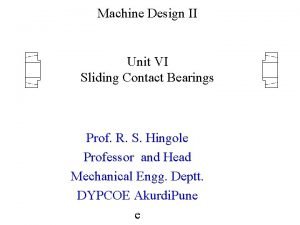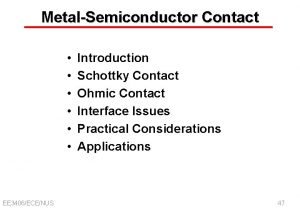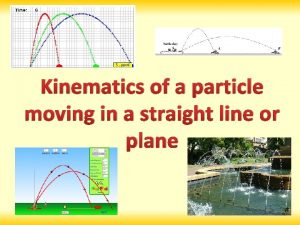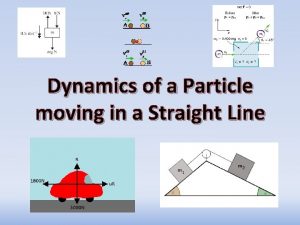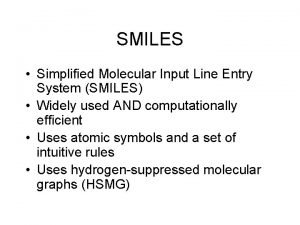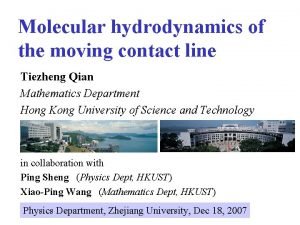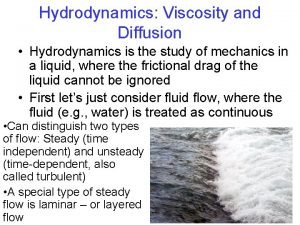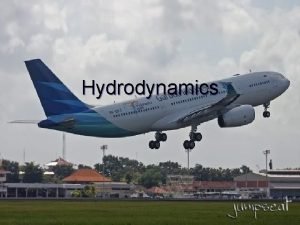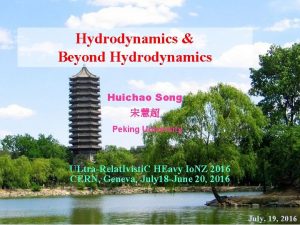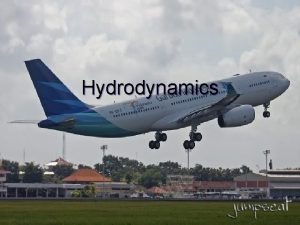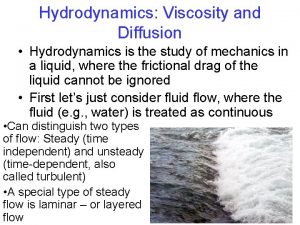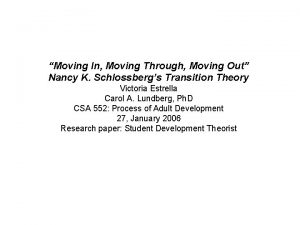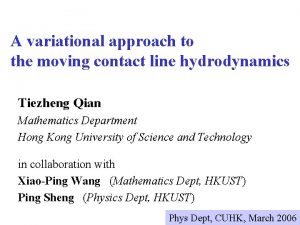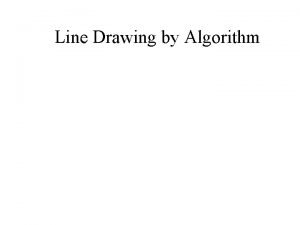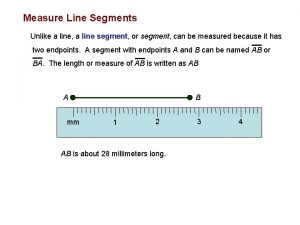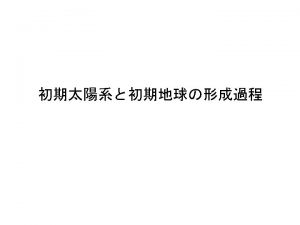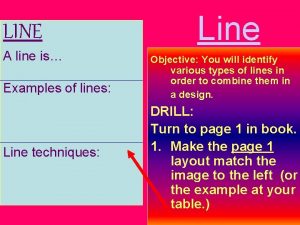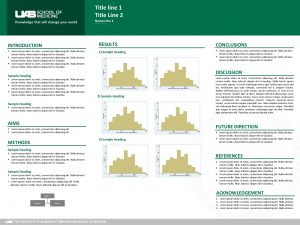Molecular hydrodynamics of the moving contact line Tiezheng

































































- Slides: 65

Molecular hydrodynamics of the moving contact line Tiezheng Qian Mathematics Department Hong Kong University of Science and Technology in collaboration with Ping Sheng (Physics Dept, HKUST) Xiao-Ping Wang (Mathematics Dept, HKUST) SISSA – Trieste – Italy, May 2007

• The no-slip boundary condition and the moving contact line problem • The generalized Navier boundary condition (GNBC) from molecular dynamics (MD) simulations • Implementation of the new slip boundary condition in a continuum hydrodynamic model (phase-field formulation) • Comparison of continuum and MD results • A variational derivation of the continuum model, for both the bulk equations and the boundary conditions, from Onsager’s principle of least energy dissipation (entropy production)

Wetting phenomena: All the real world complexities we can have! Moving contact line: All the simplifications we can make and all the simulations, molecular and continuum, Numerical experiments we can carry out! Offer a minimal model with solution to this classical fluid mechanical problem, under a general principle governing thermodynamic irreversible processes

? No-Slip Boundary Condition, A Paradigm

from Navier Boundary Condition (1823) to No-Slip Boundary Condition : shear rate at solid surface : slip length, from nano- to micrometer Practically, no slip in macroscopic flows

Young’s equation (1805):

velocity discontinuity and diverging stress at the MCL

The Huh-Scriven model for 2 D flow (linearized Navier-Stokes equation) 8 coefficients in A and B, determined by 8 boundary conditions Shear stress and pressure vary as

Dussan and Davis, J. Fluid Mech. 65, 71 -95 (1974): 1. Incompressible Newtonian fluid 2. Smooth rigid solid walls 3. Impenetrable fluid-fluid interface 4. No-slip boundary condition Stress singularity: the tangential force exerted by the fluid on the solid surface is infinite. Not even Herakles could sink a solid ! by Huh and Scriven (1971). a) To construct a continuum hydrodynamic model by removing condition (3) and/or (4). b) To make comparison with molecular dynamics simulations

Numerical experiments done for this classic fluid mechanical problem • • • Koplik, Banavar and Willemsen, PRL (1988) Thompson and Robbins, PRL (1989) Slip observed in the vicinity of the MCL Boundary condition ? ? ? Continuum deduction of molecular dynamics !

Immiscible two-phase Poiseuille flow The walls are moving to the left in this reference frame, and away from the contact line the fluid velocity near the wall coincides with the wall velocity. Near the contact lines the no-slip condition appears to fail, however.

Slip profile no slip complete slip The discrepancy between the microscopic stress and suggests a breakdown of local hydrodynamics.

The kinetic model by Blake and Haynes: The role of interfacial tension A fluctuating three phase zone. Adsorbed molecules of one fluid interchange with those of the other fluid. In equilibrium the net rate of exchange will be zero. For a three-phase zone moving relative to the solid wall, the net displacement, is due to a nonzero net rate of exchange, driven by the unbalanced Young stress The energy shift due to the unbalanced Young stress leads to two different rates

Two classes of models proposed to describe the contact line motion: An Eyring approach: Molecular adsorption/desorption processes at the contact line (three-phase zone); Molecular dissipation at the tip is dominant. T. D. Blake and J. M. Haynes, Kinetics of liquid/liquid displacement, J. Colloid Interf. Sci. 30, 421 (1969). A hydrodynamic approach: Dissipation dominated by viscous shear flow inside the wedge; For wedges of small (apparent) contact angle, a lubrication approximation used to simplify the calculations; A (molecular scale) cutoff introduced to remove the logarithmic singularity in viscous dissipation. F. Brochard-Wyart and P. G. De Gennes, Dynamics of partial wetting, Advances in Colloid and Interface Science 39, 1 (1992).

F. Brochard-Wyart and P. G. De Gennes, Dynamics of partial wetting, Adv. in Colloid and Interface Sci. 39, 1 (1992). To summarize: a complete discussion of the dynamics would in principle require both terms in Eq. (21) lubrication approximation: hydrodynamic term for the viscous dissipation in the wedge molecular term due to the kinetic adsorption/desorption Wedge: Molecular cutoff introduced to the viscous dissipation Tip: Molecular dissipative coefficient from kinetic mechanism of contact-line slip Dissipation

No-slip boundary condition ? Apparent Violation seen from the moving/slipping contact line Infinite Energy Dissipation (unphysical singularity) G. I. Taylor; K. Moffatt; Hua & Scriven; E. B. Dussan & S. H. Davis; L. M. Hocking; P. G. de Gennes; Koplik, Banavar, Willemsen; Thompson & Robbins; etc No-slip boundary condition breaks down ! • Nature of the true B. C. ? (microscopic slipping mechanism) Qian, Wang & Sheng, Phys. Rev. E 68, 016306 (2003) • If slip occurs within a length scale S in the vicinity of the contact line, then what is the magnitude of S ? Qian, Wang & Sheng, Phys. Rev. Lett. 93, 094501 (2004)

Molecular dynamics simulations for two-phase Couette flow • • • Fluid-fluid molecular interactions • System size Fluid-solid molecular interactions • Speed of the moving walls Densities (liquid) Solid wall structure (fcc) Temperature

Two identical fluids: same density and viscosity, but in general different fluid-solid interactions Smooth solid wall: solid atoms put on a crystalline structure No contact angle hysteresis!

Modified Lennard-Jones Potentials for like molecules for molecules of different species for wetting property of the fluid

fluid-1 fluid-2 fluid-1 dynamic configuration f-1 f-2 f-1 symmetric f-1 f-2 asymmetric static configurations f-1

boundary layer tangential momentum transport Stress from the rate of tangential momentum transport per unit area

schematic illustration of the boundary layer fluid force measured according to normalized distribution of wall force

The Generalized Navier boundary condition The stress in the immiscible two-phase fluid: viscous part non-viscous part interfacial force GNBC from continuum deduction static Young component subtracted >>> uncompensated Young stress A tangential force arising from the deviation from Young’s equation

obtained by subtracting the Newtonian viscous component solid circle: static symmetric solid square: static asymmetric empty circle: dynamic symmetric empty square: dynamic asymmetric

non-viscous part Slip driven by uncompensated Young stress + shear viscous stress

Uncompensated Young Stress missed in Navier B. C. • Net force due to hydrodynamic deviation from static force balance (Young’s equation) • NBC NOT capable of describing the motion of contact line • Away from the CL, the GNBC implies NBC for single phase flows.

Continuum Hydrodynamic Model: • • • Cahn-Hilliard (Landau) free energy functional Navier-Stokes equation Generalized Navier Boudary Condition (B. C. ) Advection-diffusion equation First-order equation for relaxation of (B. C. ) supplemented with incompressibility impermeability B. C.

Phase field modeling for a two-component system

supplemented with

GNBC: an equation of tangential force balance

Dussan and Davis, JFM 65, 71 -95 (1974): 1. Incompressible Newtonian fluid 2. Smooth rigid solid walls 3. Impenetrable fluid-fluid interface 4. No-slip boundary condition Stress singularity: the tangential force exerted by the fluid on the solid surface is infinite. Condition (3) >>> Diffusion across the fluid-fluid interface [Seppecher, Jacqmin, Chen---Jasnow---Vinals, Pismen---Pomeau, Briant---Yeomans] Condition (4) >>> GNBC Stress singularity, i. e. , infinite tangential force exerted by the fluid on the solid surface, is removed.

Comparison of MD and Continuum Results • Most parameters determined from MD directly • M and optimized in fitting the MD results for one configuration • All subsequent comparisons are without adjustable parameters. M and should not be regarded as fitting parameters, Since they are used to realize the interface impenetrability condition, in accordance with the MD simulations.

molecular positions projected onto the xz plane Symmetric Couette flow Asymmetric Couette flow Diffusion versus Slip in MD

near-complete slip at moving CL no slip Symmetric Couette flow V=0. 25 H=13. 6

profiles at different z levels symmetric Couette flow V=0. 25 H=13. 6 asymmetric. C Couette flow V=0. 20 H=13. 6

symmetric Couette V=0. 25 H=10. 2 symmetric Couette V=0. 275 H=13. 6





asymmetric Poiseuille flow gext=0. 05 H=13. 6

Power-law decay of partial slip away from the MCL from complete slip at the MCL to no slip far away, governed by the NBC and the asymptotic 1/r stress

The continuum hydrodynamic model for the moving contact line A Cahn-Hilliard Navier-Stokes system supplemented with the Generalized Navier boundary condition, first uncovered from molecular dynamics simulations Continuum predictions in agreement with MD results. Now derived from the principle of minimum energy dissipation, for irreversible thermodynamic processes (dissipative linear response, Onsager 1931). Qian, Wang, Sheng, J. Fluid Mech. 564, 333 -360 (2006).

Onsager’s principle for one-variable irreversible processes Langevin equation: Fokker-Plank equation for probability density Transition probability The most probable course derived from minimizing Euler-Lagrange equation:

Onsager 1931 Onsager-Machlup 1953 for the statistical distribution of the noise (random force)

The principle of minimum energy dissipation (Onsager 1931) Balance of the viscous force and the “elastic” force from a variational principle dissipation-function, positive definite and quadratic in the rates, half the rate of energy dissipation rate of change of the free energy

Minimum dissipation theorem for incompressible single-phase flows (Helmholtz 1868) Consider a flow confined by solid surfaces. Stokes equation: derived as the Euler-Lagrange equation by minimizing the functional for the rate of viscous dissipation in the bulk. The values of the velocity fixed at the solid surfaces!

Taking into account the dissipation due to the fluid slipping at the fluid-solid interface Total rate of dissipation due to viscosity in the bulk and slipping at the solid surface One more Euler-Lagrange equation at the solid surface with boundary values of the velocity subject to variation Navier boundary condition:

From velocity differential to velocity difference Transport coefficient: from viscosity to slip coefficient Green-Kubo formula J. -L. Barrat and L. Bocquet, Faraday Discuss. 112, 119 (1999).

Generalization to immiscible two-phase flows A Landau free energy functional to stabilize the interface separating the two immiscible fluids double-well structure for Interfacial free energy per unit area at the fluid-solid interface Variation of the total free energy for defining and L.

and L : chemical potential in the bulk: at the fluid-solid interface Deviations from the equilibrium measured by and L at the fluid-solid interface. in the bulk Minimizing the total free energy subject to the conservation of leads to the equilibrium conditions: (Young’s equation) For small perturbations away from the two-phase equilibrium, the additional rate of dissipation (due to the coexistence of the two phases) arises from system responses (rates) that are linearly proportional to the respective perturbations/deviations.

Dissipation function (half the total rate of energy dissipation) Rate of change of the free energy kinematic transport of continuity equation for impermeability B. C.

Minimizing with respect to the rates yields Stokes equation GNBC advection-diffusion equation 1 st order relaxational equation

Dissipation F. Brochard-Wyart and P. G. De Gennes, Adv. in Colloid and Interface Sci. 39, 1 (1992). Dissipation function: half the rate of energy dissipation outside of viscous dissipation inside of surface dissipation due to slip, concentrated around the real contact line

Mechanical effects of the fluid-fluid interfacial tensions in the bulk and at the solid surface (sharp interface limit) Young-Laplace curvature force Uncompensated Young stress (net tangential force)

Energetic variational derivation of the complete form of stress, from which the capillary force and Young stress are both obtained. Anisotropic stress tensor Capillary force density Young stress (outward surface normal n = -z)



Moving contact line over undulating surfaces: complete displacement incomplete displacement

Moving contact line over chemically patterned surfaces: (a) Low wettability contrast

(b) High wettability contrast (minimum dissipation)


van der Waals energy (per unit volume of liquid) between liquid and solid

Spreading driven by the attractive van der Waals force: Development of the precursor film in the complete wetting regime Spreading coefficient S > 0 with the van der Waals interaction taken into account wedge nominal contact line precursor real contact line

Summary: • Moving contact line calls for a slip boundary condition. • The generalized Navier boundary condition (GNBC) is derived for the immiscible two-phase flows from the principle of minimum energy dissipation (entropy production) by taking into account the fluid-solid interfacial dissipation. • Landau’s free energy & Onsager’s linear dissipative response. • Predictions from the hydrodynamic model are in excellent agreement with the full MD simulation results. • “Unreasonable effectiveness” of a continuum model. • Landau-Lifshitz-Gilbert theory for micromagnets • Ginzburg-Landau (or Bd. G) theory for superconductors • Landau-de Gennes theory for nematic liquid crystals
 Shark body shape
Shark body shape Hydrodynamics
Hydrodynamics Frother hydrodynamics
Frother hydrodynamics Hydrodynamics
Hydrodynamics Talia weiss
Talia weiss Smoothed particle hydrodynamics
Smoothed particle hydrodynamics Teknk
Teknk Non contact force examples
Non contact force examples Friction unit
Friction unit What is a contact force
What is a contact force Tension contact or noncontact
Tension contact or noncontact Atopic dermatitis vs contact dermatitis
Atopic dermatitis vs contact dermatitis Air resistance is a non contact force
Air resistance is a non contact force Thermoelectric cooler
Thermoelectric cooler Post encounter stage
Post encounter stage What are some contact forces and some noncontact forces
What are some contact forces and some noncontact forces Air resistance contact force
Air resistance contact force Covalent bond melting point
Covalent bond melting point Ionic covalent metallic
Ionic covalent metallic Zinc oxide + nitric acid → zinc nitrate + water
Zinc oxide + nitric acid → zinc nitrate + water Representative fraction
Representative fraction . a moving point to point
. a moving point to point Kinematics of a particle moving in a straight line
Kinematics of a particle moving in a straight line Dynamics of a particle moving in a straight line
Dynamics of a particle moving in a straight line Simplified molecular input line entry system
Simplified molecular input line entry system Hình ảnh bộ gõ cơ thể búng tay
Hình ảnh bộ gõ cơ thể búng tay Lp html
Lp html Bổ thể
Bổ thể Tỉ lệ cơ thể trẻ em
Tỉ lệ cơ thể trẻ em Gấu đi như thế nào
Gấu đi như thế nào Tư thế worm breton là gì
Tư thế worm breton là gì Hát lên người ơi
Hát lên người ơi Kể tên các môn thể thao
Kể tên các môn thể thao Thế nào là hệ số cao nhất
Thế nào là hệ số cao nhất Các châu lục và đại dương trên thế giới
Các châu lục và đại dương trên thế giới Công của trọng lực
Công của trọng lực Trời xanh đây là của chúng ta thể thơ
Trời xanh đây là của chúng ta thể thơ Mật thư anh em như thể tay chân
Mật thư anh em như thể tay chân 101012 bằng
101012 bằng độ dài liên kết
độ dài liên kết Các châu lục và đại dương trên thế giới
Các châu lục và đại dương trên thế giới Thơ thất ngôn tứ tuyệt đường luật
Thơ thất ngôn tứ tuyệt đường luật Quá trình desamine hóa có thể tạo ra
Quá trình desamine hóa có thể tạo ra Một số thể thơ truyền thống
Một số thể thơ truyền thống Cái miệng bé xinh thế chỉ nói điều hay thôi
Cái miệng bé xinh thế chỉ nói điều hay thôi Vẽ hình chiếu vuông góc của vật thể sau
Vẽ hình chiếu vuông góc của vật thể sau Nguyên nhân của sự mỏi cơ sinh 8
Nguyên nhân của sự mỏi cơ sinh 8 đặc điểm cơ thể của người tối cổ
đặc điểm cơ thể của người tối cổ V cc cc
V cc cc Vẽ hình chiếu đứng bằng cạnh của vật thể
Vẽ hình chiếu đứng bằng cạnh của vật thể Fecboak
Fecboak Thẻ vin
Thẻ vin đại từ thay thế
đại từ thay thế điện thế nghỉ
điện thế nghỉ Tư thế ngồi viết
Tư thế ngồi viết Diễn thế sinh thái là
Diễn thế sinh thái là Dot
Dot Số nguyên tố là
Số nguyên tố là Tư thế ngồi viết
Tư thế ngồi viết Lời thề hippocrates
Lời thề hippocrates Thiếu nhi thế giới liên hoan
Thiếu nhi thế giới liên hoan ưu thế lai là gì
ưu thế lai là gì Khi nào hổ mẹ dạy hổ con săn mồi
Khi nào hổ mẹ dạy hổ con săn mồi Khi nào hổ mẹ dạy hổ con săn mồi
Khi nào hổ mẹ dạy hổ con săn mồi Sơ đồ cơ thể người
Sơ đồ cơ thể người Từ ngữ thể hiện lòng nhân hậu
Từ ngữ thể hiện lòng nhân hậu

